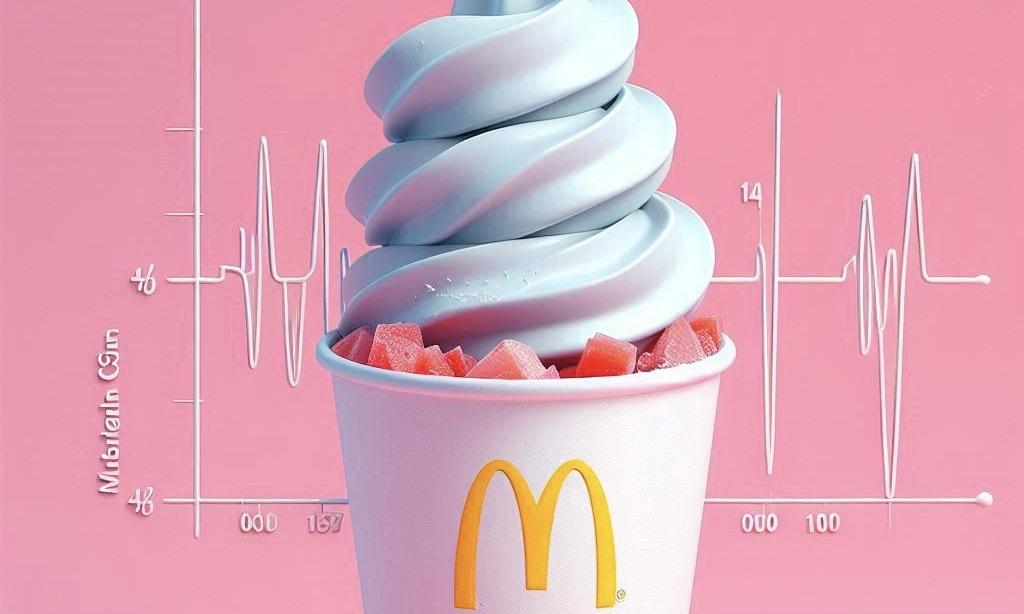McDonald’s soft serve, a fast-food favorite, is legally classified as reduced-fat ice cream by the FDA. Despite its lighter texture and lower fat content, it still qualifies as ice cream, thanks to its milk-based formulation and carefully selected stabilizers and emulsifiers.
Uncovering the Ingredients and FDA Classification of McDonald's Soft Serve as Reduced-Fat Ice Cream
McDonald's soft serve is widely recognized as a sweet and cold fast-food staple, though its availability often depends on whether the soft serve machines are functional. However, recently, ice cream treats have been subject to increased scrutiny. Upon closer inspection, not all products classified as ice cream meet the Food and Drug Administration (FDA) criteria. For example, Dairy Queen's version is called "soft serve" rather than ice cream, as it does not conform to the FDA's definition of ice cream. Similarly, the unique melting characteristics of Drumsticks present a different set of considerations.
So, is McDonald's soft serve technically ice cream, and what are its ingredients? The answer is yes, McDonald's soft serve is indeed ice cream. Its composition includes milk, sugar, cream, corn syrup, natural flavor, mono and diglycerides, cellulose gum, guar gum, carrageenan, and vitamin A palmitate. Specifically, it is classified as reduced-fat ice cream, meaning it contains 25% less total fat than regular ice cream. Therefore, when enjoying a McDonald's swirly cone, one consumes a treat that legally qualifies as ice cream, albeit with a lower fat content.
The FDA defines reduced-fat ice cream as a product with 25% less fat than its regular counterpart. McDonald's soft serve uses milk as the primary ingredient rather than heavy cream, which typically has a fat content of 38%. As milk plays a more significant role in the formulation than cream, the resulting product is naturally lower in fat. Additional ingredients such as cellulose gum, guar gum, and carrageenan serve as thickeners and stabilizers without contributing to the fat content.
Monoglycerides and diglycerides, commonly found in processed foods, function as emulsifiers in McDonald's soft serve, allowing fat and water to blend seamlessly without separation, similar to mayonnaise. Vitamin A palmitate, meanwhile, is added to low-fat milk products to restore vitamins lost during the fat-removal process.
The Role of Air in McDonald’s Soft Serve: How Overrun Shapes Texture and Taste
One aspect of all ice cream not listed on labels is its air content, incorporated during churning. According to The Takeout, this process, known as overrun, can produce a soft serve containing 50% to 60% air, contributing to the product's volume and fluffy texture. Although McDonald's reduced-fat ice cream may not offer the most luxurious or silky texture, it is easy to consume quickly, especially on a hot summer before it melts.
Technically, the air is not considered an ingredient. Hence, it is absent from labels, but its contribution to the mouthfeel of ice cream is significant. In conclusion, McDonald's soft serve is, without a doubt, ice cream. It is not a frozen dairy dessert or a dairy-adjacent treat but rather reduced-fat ice cream in its most straightforward form.



 Toyota to Sell U.S.-Made Camry, Highlander, and Tundra in Japan From 2026 to Ease Trade Tensions
Toyota to Sell U.S.-Made Camry, Highlander, and Tundra in Japan From 2026 to Ease Trade Tensions  Amazon in Talks to Invest $10 Billion in OpenAI as AI Firm Eyes $1 Trillion IPO Valuation
Amazon in Talks to Invest $10 Billion in OpenAI as AI Firm Eyes $1 Trillion IPO Valuation  Nike Shares Slide as Margins Fall Again Amid China Slump and Costly Turnaround
Nike Shares Slide as Margins Fall Again Amid China Slump and Costly Turnaround  Yes, government influences wages – but not just in the way you might think
Yes, government influences wages – but not just in the way you might think  Glastonbury is as popular than ever, but complaints about the lineup reveal its generational challenge
Glastonbury is as popular than ever, but complaints about the lineup reveal its generational challenge  Delta Air Lines President Glen Hauenstein to Retire, Leaving Legacy of Premium Strategy
Delta Air Lines President Glen Hauenstein to Retire, Leaving Legacy of Premium Strategy  Treasury Wine Estates Shares Plunge on Earnings Warning Amid U.S. and China Weakness
Treasury Wine Estates Shares Plunge on Earnings Warning Amid U.S. and China Weakness  Every generation thinks they had it the toughest, but for Gen Z, they’re probably right
Every generation thinks they had it the toughest, but for Gen Z, they’re probably right  Instacart Stock Drops After FTC Probes AI-Based Price Discrimination Claims
Instacart Stock Drops After FTC Probes AI-Based Price Discrimination Claims  The American mass exodus to Canada amid Trump 2.0 has yet to materialize
The American mass exodus to Canada amid Trump 2.0 has yet to materialize  FedEx Beats Q2 Earnings Expectations, Raises Full-Year Outlook Despite Stock Dip
FedEx Beats Q2 Earnings Expectations, Raises Full-Year Outlook Despite Stock Dip  Sanofi’s Efdoralprin Alfa Gains EMA Orphan Status for Rare Lung Disease
Sanofi’s Efdoralprin Alfa Gains EMA Orphan Status for Rare Lung Disease  Why financial hardship is more likely if you’re disabled or sick
Why financial hardship is more likely if you’re disabled or sick  Why have so few atrocities ever been recognised as genocide?
Why have so few atrocities ever been recognised as genocide? 































